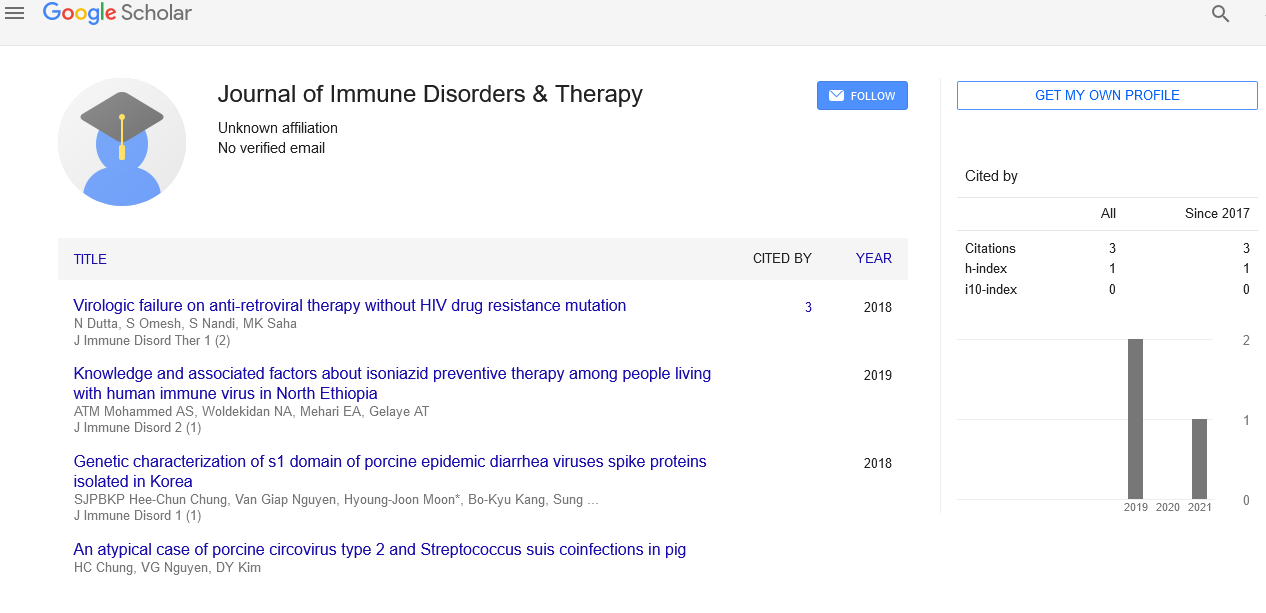Immunology of fungal infections
Received: 10-Oct-2017 Accepted Date: Oct 11, 2017; Published: 15-Oct-2017
Citation: Moreira DC. Immunology of fungal infections. Journal of Immunopathology. October-2017;1(1):1-2.
This open-access article is distributed under the terms of the Creative Commons Attribution Non-Commercial License (CC BY-NC) (http://creativecommons.org/licenses/by-nc/4.0/), which permits reuse, distribution and reproduction of the article, provided that the original work is properly cited and the reuse is restricted to noncommercial purposes. For commercial reuse, contact reprints@pulsus.com
Fungi are eukaryotes organisms morphologically classified into and filamentous forms. Most fungi are ubiquitous in the environment, and can interact with plants, animals or humans, establishing symbiotic, commensal, latent or pathogenic relationships.
Mycoses are conditions in which fungi pass the resistance barriers of animals and establish infections. This group of diseases has various clinical manifestations that range from acute self-limiting pulmonary syndrome and cutaneous lesions in immunocompetent individuals to inflammatory diseases and severe life-threatening infections in immunosuppressed patients.
The appearance of AIDS and the evolution of immunosuppressive treatments essential for the success of organ transplants, as well as cancer, chemotherapy, diabetes and autoimmune diseases, have highlighted the importance of fungal infections. Thus, to understand the mechanisms of the immune response to fungal infections is a critical point to the management of their prevention and control.
The host immune response to fungi is mediated by mechanisms of resistance, in which the host has the ability to limit fungal burden, and tolerance, that is the ability to limit the host damage caused by the immune response. A disease outcome is the result of the clash between the mechanisms of pathogenicity of the fungi and the mechanisms of resistance of the host, leading to the removal of the infection or its progression according to the imbalance of these mechanisms.
The immune response is divided in two mechanisms: Innate and adaptive response. Depending upon the organism and anatomical site of infection, these mechanisms differ, as an example; the fungal morphotype (yeast, hyphae) may be an important determinant of the host response. Yeasts and spores are often effectively phagocytosed by macrophages, while hyphae are ingested by neutrophils due their large size. On the other hand, pathogenic fungi have developed mechanisms to elude and subvert host defences. Some fungi can survive within phagocytes by using them to evade fungal killing and to disseminate throughout the host.
As previously cited, some conditions predispose patients to fungal infections. The presence of intravascular catheters, neutropenia or malignances are risk factors to systemic candidiasis and hyalohyphomycosis, an opportunistic mycosis caused by hyaline fungi, as Acremonium spp., Fusarium spp., Scopulariopsis spp. Paecilomyces spp., Purpureocillium lilacinum, among others. Patients with AIDS and transplant recipients are especially vulnerable to cryptococcosis. Filamentous fungi as Aspergillus spp. and the dark walled fungi, generally cause invasive disease in neutropenic hosts and solid organ transplant recipients.
Although immunosuppressed individuals are most commonly affected by fungal infections, it is noteworthy that the number of reports of the opportunistic infections in immunocompetent individuals has increased in the last 10 years. Thus, it shows the need for a better understanding of the immunological bases of the host parasite relationship, considering the variability of response and the ability of the fungus to escape and survive to this pressure. That is the main purpose of the study, and why not say, the beauty of the immunology of fungal infections. Two sciences working together to minimize damage and improve the quality of life of humans and animals.





